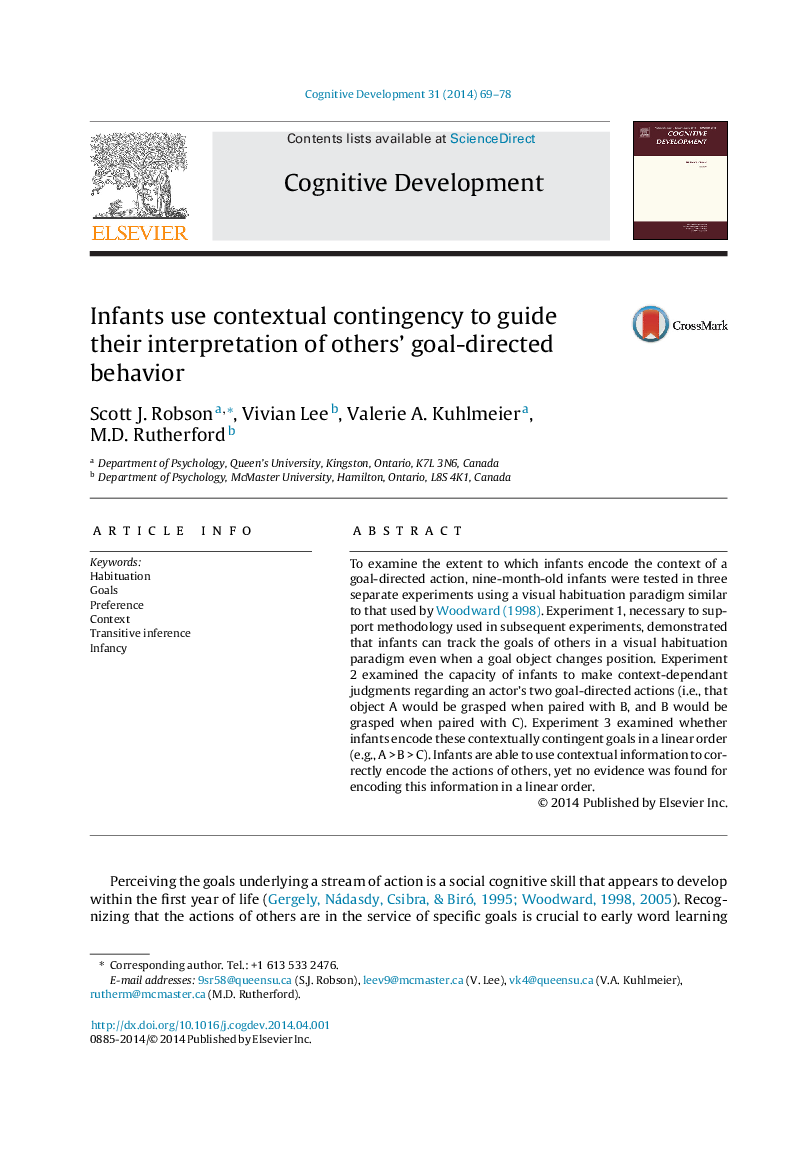| کد مقاله | کد نشریه | سال انتشار | مقاله انگلیسی | نسخه تمام متن |
|---|---|---|---|---|
| 7272546 | 1473352 | 2014 | 10 صفحه PDF | دانلود رایگان |
عنوان انگلیسی مقاله ISI
Infants use contextual contingency to guide their interpretation of others' goal-directed behavior
ترجمه فارسی عنوان
نوزادان از احتمال احتمالی استفاده می کنند تا تفسیر خود را از رفتار هدایت شده دیگران هدایت کنند
دانلود مقاله + سفارش ترجمه
دانلود مقاله ISI انگلیسی
رایگان برای ایرانیان
کلمات کلیدی
حبابی اهداف، ترجیح، متن نوشته، استنتاج ترتیب، نوزادان،
موضوعات مرتبط
علوم انسانی و اجتماعی
روانشناسی
روانشناسی رشد و آموزشی
چکیده انگلیسی
To examine the extent to which infants encode the context of a goal-directed action, nine-month-old infants were tested in three separate experiments using a visual habituation paradigm similar to that used by Woodward (1998). Experiment 1, necessary to support methodology used in subsequent experiments, demonstrated that infants can track the goals of others in a visual habituation paradigm even when a goal object changes position. Experiment 2 examined the capacity of infants to make context-dependant judgments regarding an actor's two goal-directed actions (i.e., that object A would be grasped when paired with B, and B would be grasped when paired with C). Experiment 3 examined whether infants encode these contextually contingent goals in a linear order (e.g., AÂ >Â BÂ >Â C). Infants are able to use contextual information to correctly encode the actions of others, yet no evidence was found for encoding this information in a linear order.
ناشر
Database: Elsevier - ScienceDirect (ساینس دایرکت)
Journal: Cognitive Development - Volume 31, JulyâSeptember 2014, Pages 69-78
Journal: Cognitive Development - Volume 31, JulyâSeptember 2014, Pages 69-78
نویسندگان
Scott J. Robson, Vivian Lee, Valerie A. Kuhlmeier, M.D. Rutherford,
